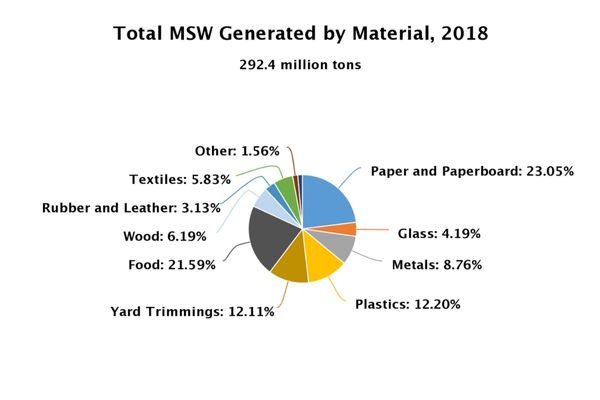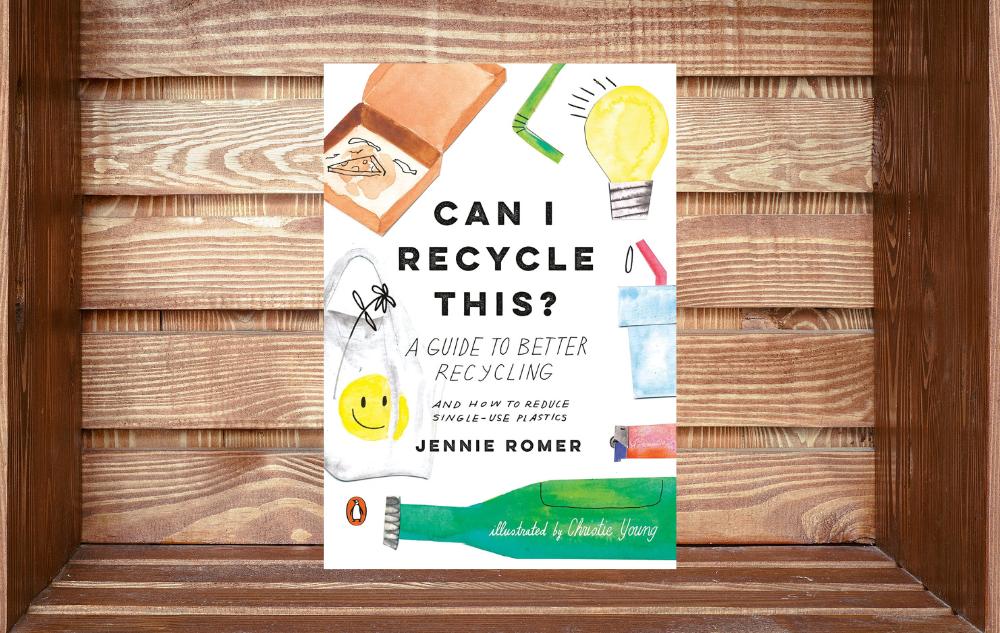Recycle More Effectively by Checking Out One Planet Life’s Comprehensive Guide
Each year, Keep America Beautiful encourages individuals to take the #BeRecycled Pledge and complete the following goals in November:
- LEARN: “I will find out what materials are collected for recycling in my community.”
- ACT: “Within the next month, I will reduce the amount of waste I produce, I will recycle more, and I will buy products made with recycled content.”
- SHARE: “In the next month, I will encourage one family member or one friend to take the #BeRecycled pledge.”
It’s no secret that the state of recycling in America needs improving, which increases the importance of raising awareness of the topic. While the issue will take a multi-faceted approach to fix – including legislation, corporate responsibility, and more – individuals have a huge opportunity to make a difference through knowledge sharing and devotion to a more sustainable lifestyle.
What’s Wrong with the System?
To positively impact the state of recycling in America, it’s essential to understand the process and issues plaguing recycling efforts nationwide.
In the most recent figures available by the United States Environmental Protection Agency (EPA), 94.2 million tons of the total 292.4 million tons of municipal solid waste generated in the U.S. was recycled in 2018.

The most-recycled products and materials included:
- Corrugated boxes – 32.1 million tons
- Mixed nondurable paper products – 8.8 million tons
- Newspapers/mechanical papers – 3.3 million tons
- Lead-acid batteries – 2.9 million tons
- Major appliances – 3.1 million tons
- Wood packaging – 3.1 million tons
- Glass containers – 3 million tons
- Tires – 2.6 million tons
- Mixed paper containers and packaging – 1.8 million tons
- Selected consumer electronics – 1 million tons
Collectively, these products accounted for 90% of total municipal solid waste recycling in 2018.
The EPA also collected data related to composting and food waste management.
Composted waste accounted for a total of 25 million tons, including approximately 22.3 million tons of yard trimmings (more than a five-fold increase since 1990) and 2.6 million tons of food waste (4.1% of generation of wasted food).
Other methods of food management were estimated for the first time in 2018, tracking 17.7 million tons of wasted food managed through animal feed, co-digestion/anaerobic digestion, bio-based materials/biochemical processing, donation, land application, and sewer/wastewater treatment.
The current recycling rate nationwide is 34%, according to Keep America Beautiful. While the recycling rate continues to increase, so do production and consumption. In fact, each American averages 4.9 pounds of waste each day that ends up in landfills.
But how is all this waste given a second life? Well, experts are still trying to come up with an effective solution.
Prior to 2018, most recyclables were shipped to China for reprocessing.
But when the nation implemented its “National Sword Policy,” the global recycling system took a hit. By imposing strict contamination limits on recyclable materials and prohibiting imports of low-quality recyclables altogether, recycled material quickly began piling up at materials recycling facilities (MRFs) and eventually in landfills.
In a 2022 University of Buffalo study analyzing the impacts of China’s policy, researchers determined the quantity of plastic landfilled in the U.S. alone increased by 23.2%.
Though there has been a rise in technology and other tactics to increase cleaner recycling streams, the U.S. continues to struggle to find cost-effective ways to recycle the massive amounts of waste Americans produce yearly.
Residential recycling service costs hit $6.85 per month per household due to repercussions from National Sword – up 11% over 2018 costs, according to The State of Recycling Today Report conducted by RTS.
However, efforts are being made to overhaul the system and create a better process for recycling across America. The EPA is following a five-step approach, outlined in The National Recycling Strategy, to try and reach a National Recycling Goal of increasing the recycling rate to 50% by 2030.
The objectives, which aim to create a more resilient and cost-effective national recycling system, include the following:
- Improving markets for recycling commodities.
- Increasing collection and improving materials management infrastructure.
- Reducing contamination in the recycled materials stream.
- Enhancing policies to support recycling.
- Standardizing measurement and increasing data collection.
As Americans wait for change on a governmental level, what if, in the meantime, they put more thought into what they consume overall and how they can do so in a more sustainable way?
The EPA offers a comprehensive look at what can be recycled in most communities across the country.
The top 10 items to toss in your blue bin include:
- Cardboard
- Paper
- Food Boxes
- Beverage Cans
- Food Cans
- Glass Bottles
- Jars (Glass & Plastic)
- Jugs
- Plastic Bottles & Caps

Recycling goes awry when contamination occurs.
Entire batches of recyclables can end up in landfills if too many unrecyclable or dirty items are mixed in. Since the U.S. relies on single-stream recycling systems, where different types of items are tossed into the same bin, the trend of “wish-cycling” wreaks havoc. In this practice of recycling items that cannot be recycled at all, cannot be recycled at the local facility, or cannot be recycled in a contaminated state, Americans are causing more harm than good.
Knowing what can and can’t be recycled through your local service is essential to recycling responsibility. Are you unsure about what your local service can handle? Check out the company’s website or give them a call so that you are helping provide a solution, not contributing to the problem.
As people call for more accountability from corporations and governments, more studies are being conducted on the recyclability of consumer goods. In 2020, GreenPeace published the Comprehensive U.S. Survey of Plastics Recyclability, providing a factual look at the shortcomings of the system and suggesting solutions such as transparent labeling, honest advertising, and more to turn the tide.
In a 2020 report from the Columbia Climate School, education is listed as the first strategy to implement change.
“Minimizing contamination of recyclables and the flow of recyclable items to landfills requires consumer awareness,” Renee Cho, staff writer for the Columbia Climate School, explained. “Community events, campaigns, and brochures are necessary to educate residents about the importance of reusing, recycling, and composting, as well as how to properly recycle in their particular community. They need to understand which items are actually recyclable and which are not.”
A Solution: Use Less, Help More
With so many factors at play, how can one remain hopeful about the future of a planet piling up with waste? Recycling is only one facet of a three-step approach that has been around for decades but is more important now than ever: “Reduce, Reuse, Recycle.”
The world continues to generate massive amounts of single-use plastic – one of the largest contributors to pollution on a global scale. Individuals can make a tremendous impact by not only recycling waste but by reducing the amount they consume in the first place.
By saying “no” to single-use plastics altogether and replacing them with sustainable, reusable options, you are cutting down on the amount of recyclables that could end up in a landfill from contamination outside of your control.
There are so many ways to give items a second life. Here are just a few ways that your individual contributions can make an impact:
Reduce: Swap out single-use plastic water bottles for a refillable option. Prefer a clean taste? Invest in a water filter!
Reuse: Clearing out your closet? Don’t throw away the items you don’t wear anymore; instead, donate them to someone in need. Looking to switch up your wardrobe? The fashion industry is responsible for 10% of all CO2 emissions globally and is estimated to surge to more than 50% by 2030. Check out a local thrift store before buying new.
Recycle: Start composting! Even if you live in an urban area, there are plenty of ways to start composting your kitchen scraps. Using a composting service, you can divert 360 lbs of food waste from landfills per year, which creates 182 lbs of compost and equates to offsetting 1,065 miles driven by a car. Learn how to get started by checking out these resources on our website.
Refill: Keep packaging in mind when you make purchases. Shopping in bulk cuts down on the amount of packaging we consume. Shop frequently at stores that allow you to skip the packaging and bring your own reusable containers!
Bonus: Do some research on what items your local facility can actually recycle, so you aren’t clogging up the system with contaminants. Share this information with your community to increase efficient recycling on a larger scale.
While the United States undoubtedly faces an uphill battle in streamlining its recycling system, individuals can implement Joyful Changes in their everyday lives to make a difference. By “Reducing, Reusing, and Recycling” in creative ways, we can collectively cut the amount of waste that is funneled into landfills each year, paving the way to a cleaner future.
Interested in Learning More?
CAN I RECYCLE THIS? A Guide to Better Recycling and How to Reduce Single-Use Plastics By Jennie Romer is a wonderful resource for those just diving into the world of recycling.
While we know the mantra – reduce, reuse, recycle, do we know what is recycled, what goes into a landfill, and what goes into our oceans? Romer is a leading expert on single-use plastics and reduction and recycling in the U.S. and has the answers to your questions about recyclables.
Don’t Forget!
Sign Keep America Beautiful’s #BeRecycled pledge to spread awareness of recycling to your friends and neighbors!
The One Planet Life team encourages you to take this challenge a step further:
- LEARN: More about simple ways you can cut down on carbon emissions in your everyday life through OPL posts, shared resources, and social connections.
- ACT: By tracking your Joyful Changes through the One Planet Life App, you can see, in real numbers, how small changes carry a heavy impact.
- SHARE: Our app with your friends and family. Make a collective impact by joining challenges together. When 16 of us each reduce our CO2 emissions by one metric ton, that’s equivalent to one person going net zero!

Written by Carley Kimball
Freelance Journalist and OPL Content Contributor
“I’ve always tried to implement planet-friendly practices in my life but didn’t quite realize just how much of an impact individuals can make until I was introduced to One Planet Life. I’m so excited to be able to utilize my professional skills to contribute valuable information and positive personal experiences to help make the world a better place.”












